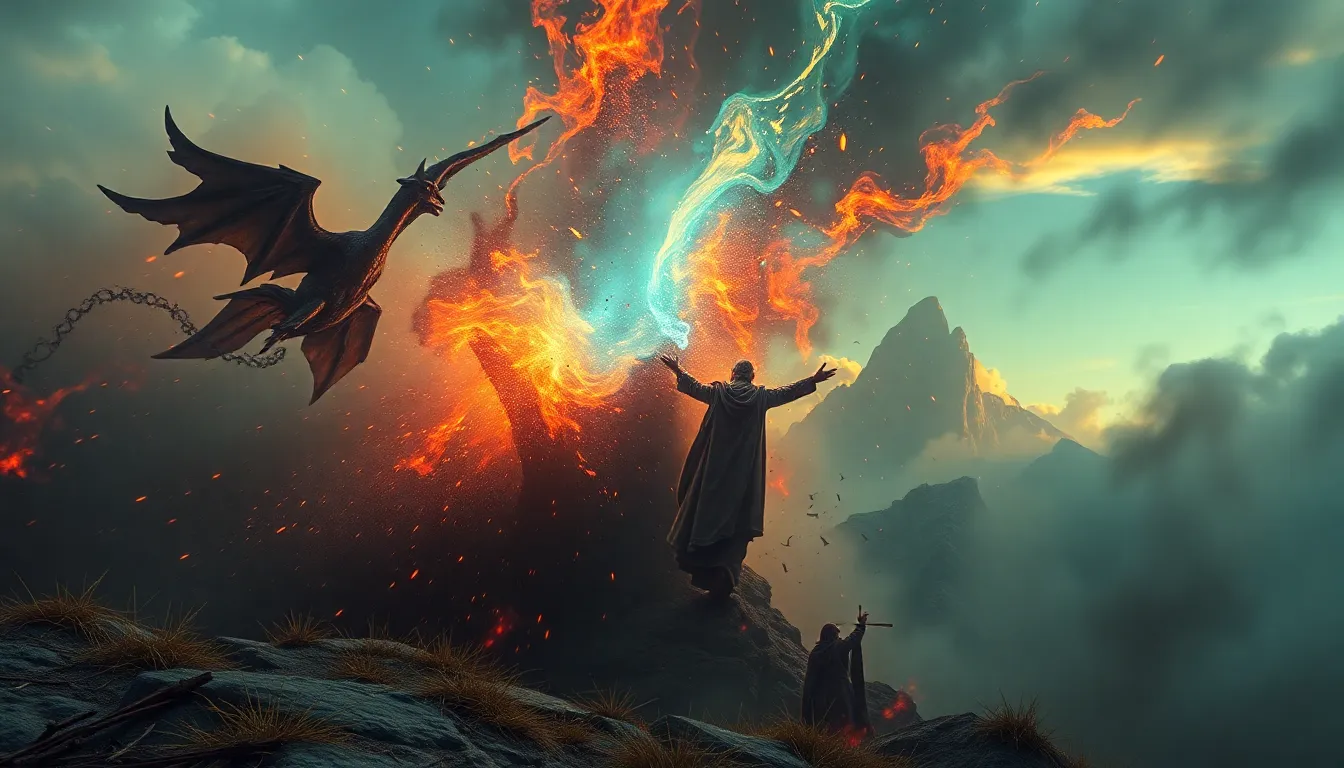The Enigmatic Nature of Tricksters: More Than Just Jokers
I. Introduction
In folklore and cultural narratives, tricksters are often depicted as mischievous figures who challenge norms and provoke laughter. These characters, found across various cultures, serve as both entertainers and catalysts for deeper insights. The purpose of this article is to delve into the multifaceted nature of tricksters, examining their roles beyond mere comedic relief, and exploring their profound implications in storytelling and society.
II. Historical Context of Trickster Archetypes
Trickster figures have deep roots in human history, emerging from a range of cultural backgrounds. Their characteristics and roles vary, but they consistently embody a spirit of disruption and transformation.
A. Origins of trickster figures in various cultures
- Native American: Figures like Coyote and Raven are central to creation stories, often embodying wisdom and folly.
- African: Anansi the Spider serves as a symbol of cunning and resourcefulness, teaching moral lessons through his antics.
- European: Loki from Norse mythology represents chaos and mischief, often manipulating events to suit his needs.
B. Evolution of trickster archetypes through history
Over time, trickster figures have evolved from traditional folklore into complex characters in modern narratives. Their portrayal has shifted from simple jesters to profound commentators on the human condition.
C. Key literary and mythological examples
Notable trickster figures include:
- Loki: The Norse god known for his shapeshifting and cunning.
- Anansi: A West African spider who often outsmarts stronger opponents.
- Hermes: The Greek god of trade and communication, also known for his trickery and cleverness.
III. Psychological Dimensions of Tricksters
Tricksters serve as symbols of the unconscious mind, revealing hidden truths and challenging societal constructs.
A. The trickster as a symbol of the unconscious mind
They embody traits that are often repressed in society, such as chaos and rebellion, prompting introspection and growth.
B. Tricksters and their role in challenging societal norms
By breaking rules and defying expectations, tricksters encourage individuals to question authority and explore alternative perspectives.
C. Psychological theories related to humor and subversion
Humor is a powerful tool for subversion. Theories suggest that humor can relieve tension, promote social bonding, and facilitate change by addressing uncomfortable truths.
IV. The Trickster as a Catalyst for Change
Tricksters disrupt the status quo, often leading to significant social or political transformations.
A. How tricksters disrupt the status quo
Through their actions, tricksters challenge established norms and provoke societal reflection.
B. Case studies of tricksters leading to social or political transformation
- Harlequin: In the commedia dell’arte, Harlequin’s antics often reflect and critique societal norms.
- Rabelais’ Pantagruel: The character’s excesses challenge the rigid structures of Renaissance society.
C. The balance between chaos and order in trickster narratives
Tricksters embody the tension between chaos and order, often highlighting the necessity of both in human experience.
V. Tricksters in Modern Media
In contemporary literature and film, the representation of trickster figures has transformed, reflecting current societal issues.
A. Representation of trickster figures in contemporary literature and film
Modern tricksters often take on roles that critique authority and explore moral ambiguity.
B. Analysis of popular trickster characters
- The Joker: A chaotic figure embodying the darker aspects of human nature.
- Deadpool: Known for breaking the fourth wall, he challenges traditional superhero norms.
C. The evolution of trickster roles in modern storytelling
As societal values shift, so too do the motivations and implications of trickster characters in media.
VI. Cultural Significance of Tricksters
Tricksters operate as cultural critics, using humor to address serious societal issues.
A. Tricksters as cultural critics and social commentators
Through satire and wit, they shine a light on societal flaws and injustices.
B. The role of humor in addressing serious societal issues
Humor serves as a vehicle for discussing taboo topics, allowing for reflection and dialogue.
C. How different cultures interpret the trickster’s function
Diverse cultures offer unique perspectives on the trickster’s role, often reflecting their specific social contexts.
VII. The Duality of Trickster Figures
Trickster figures often walk the line between hero and villain, embodying ethical dilemmas.
A. The fine line between hero and villain
Tricksters can be both saviors and destroyers, depending on the context of their actions.
B. Ethical dilemmas posed by trickster actions
Their choices often raise questions about morality, legality, and societal norms.
C. The complexity of motivation behind trickster behavior
Understanding the motivations of tricksters can reveal deeper truths about human nature and societal values.
VIII. The Role of Tricksters in Personal Growth
On a personal level, tricksters can serve as guides for self-discovery and transformation.
A. Tricksters as guides for self-discovery and transformation
Embracing the trickster within can lead to personal growth and a deeper understanding of oneself.
B. Lessons learned from embracing one’s own inner trickster
Lessons include resilience, adaptability, and the power of humor in overcoming challenges.
C. Practical applications of trickster wisdom in everyday life
Incorporating elements of trickster wisdom can encourage creativity, flexibility, and a greater sense of playfulness in life.
IX. The Future of Trickster Narratives
As global issues evolve, so too do the narratives surrounding tricksters.
A. How global issues are shaping modern trickster tales
Contemporary challenges such as climate change, inequality, and technological advancements are influencing the portrayal of tricksters.
B. The emergence of new trickster figures in digital spaces and activism
New platforms give rise to tricksters who challenge conventions and advocate for social change.
C. Predictions for the evolution of trickster archetypes in the 21st century
As society continues to change, we can expect trickster figures to adapt, reflecting the complexities of modern life.
X. Conclusion
Tricksters are far more than mere jesters; they are vital figures in folklore, psychology, and contemporary culture. Their ability to challenge norms, inspire change, and facilitate personal growth makes them essential to our understanding of human nature. As we move forward, the legacy of tricksters will continue to evolve, offering insights and reflections on the world around us.


